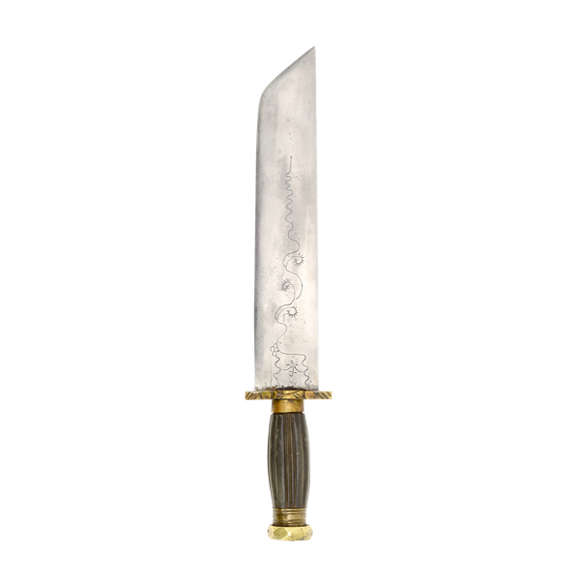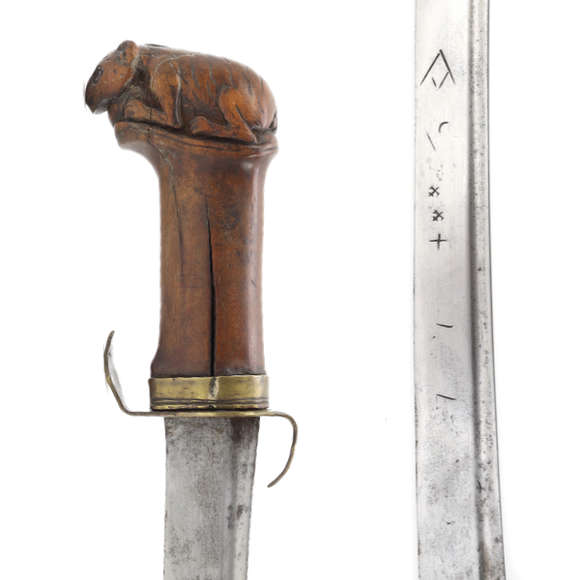Broad bladed example with horn hilt and engraved blade.

Sheathed 35.5 cm
Knife 29.4 cm
14.5 cm
3.5 mm at base
21 mm at base
Sheathed 153 grams
Knife 65 grams
Iron, wood, silk
Ainu culture
Chitose, Ishikari province, Hokkaido
Late 19th century
From an American collector
Introduction
The Ainu people were early settlers of Hokkaido, the northernmost island of the Japanese archipelago, and are considered the indigenous people of this area. Their culture is very much their own, although they have taken elements from neighboring cultures in their local arts and crafts.
The Ainu men traditionally carried a utility knife called makiri that was used for woodcarving and for cutting food. Women carried a slightly smaller version called menoko-makiri which they used for food, and gathering fruits and bark.
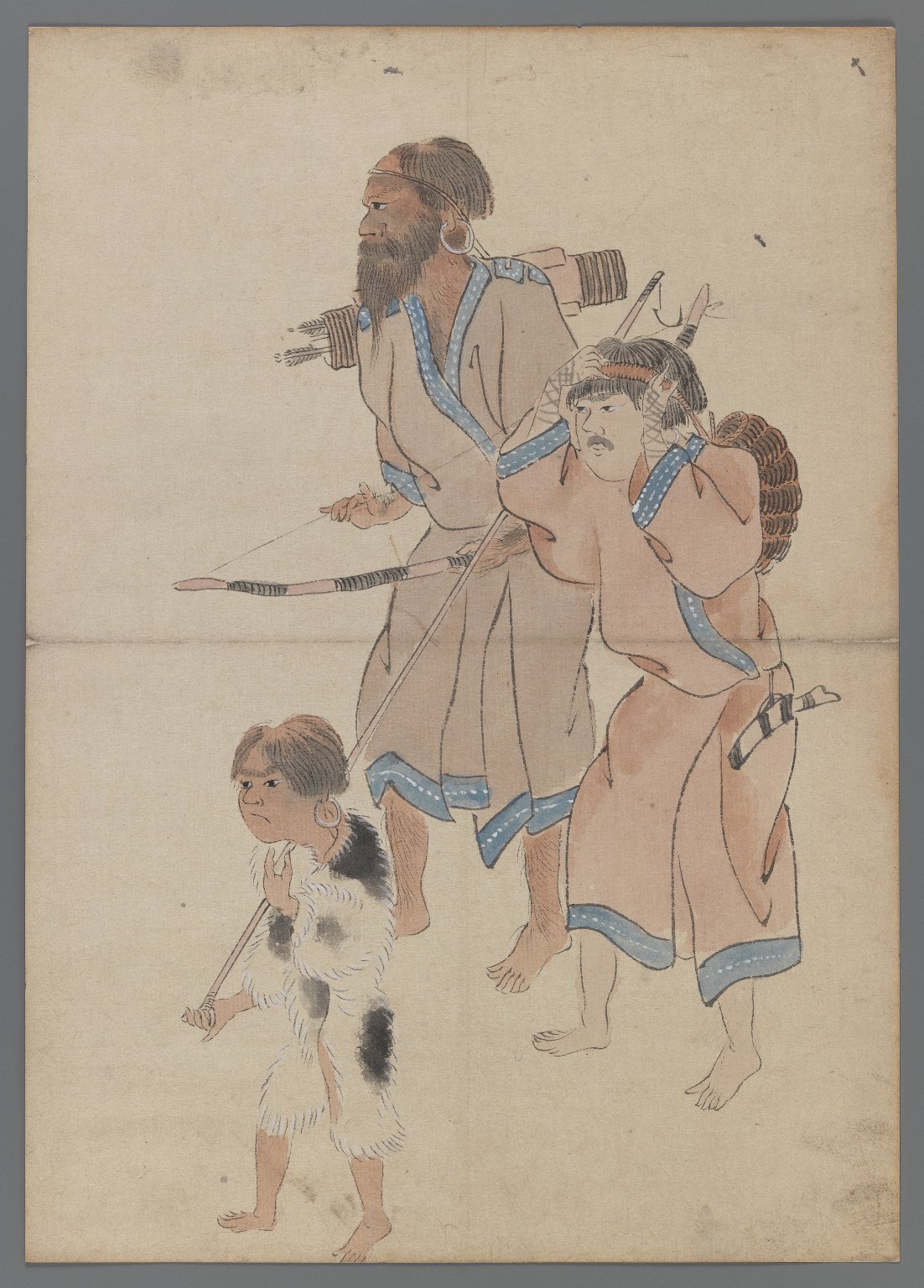
Ainu hunters. The one on the left carrying his makiri.
19th century painting. Anonymous.
Brooklyn Museum accession number X1085.
On makiri knives the handle and blade both follow the same curve, with the knife's edge being on the outside of the curve. The edges have a single bevel, on the right side. In regards to their use:
"The knife In cutting is frequently, perhaps generally, drawn toward the cutter."
-Frederick Starr; The Ainu group at the Saint Louis exposition.
Chicago, The Open Court Publishing Company, 1904. Page 106.
This example
An Ainu knife of typical form. The blade is narrow and tapers to a sharp point. There is a mark at the base of the blade that consists of a semi-circle with an open side, and a horizontal stroke.

The hilt and scabbard are each made of a single piece of wood. The scabbard has a slit at the bottom, which probably served the dual function of first making it easier to hollow out the scabbard to accommodate the blade, and second it makes it easier to keep the scabbard inside clean and dry. The scabbard is reinforced with a wrapping of cherry bark, that prevent splitting at the mouth when the hilt is inserted.
Both are decorated with carvings in in low to moderate relief. The main decor consists of a pattern resembling fish scales, and additional carvings that resemble a fan of leaves or feathers are repeated on both scabbard and hilt.
A yellow silk string is still attached to the scabbard. It may not be original, but is not synthetic either.
Comparable examples
A very similar Ainu knife was collected by dr John Andersen in Chitose, Ishikari province, Hokkaido. He donated it to the British Museum in 1885. It can be found under accession number As1885,1219.3.a-b.
Condition
Some damage to scabbard and hilt. Scabbard damage is at the base of the suspension plate. At the hilt some chips broke off the pommel. Some dents and scratches to blade as well. See photos.






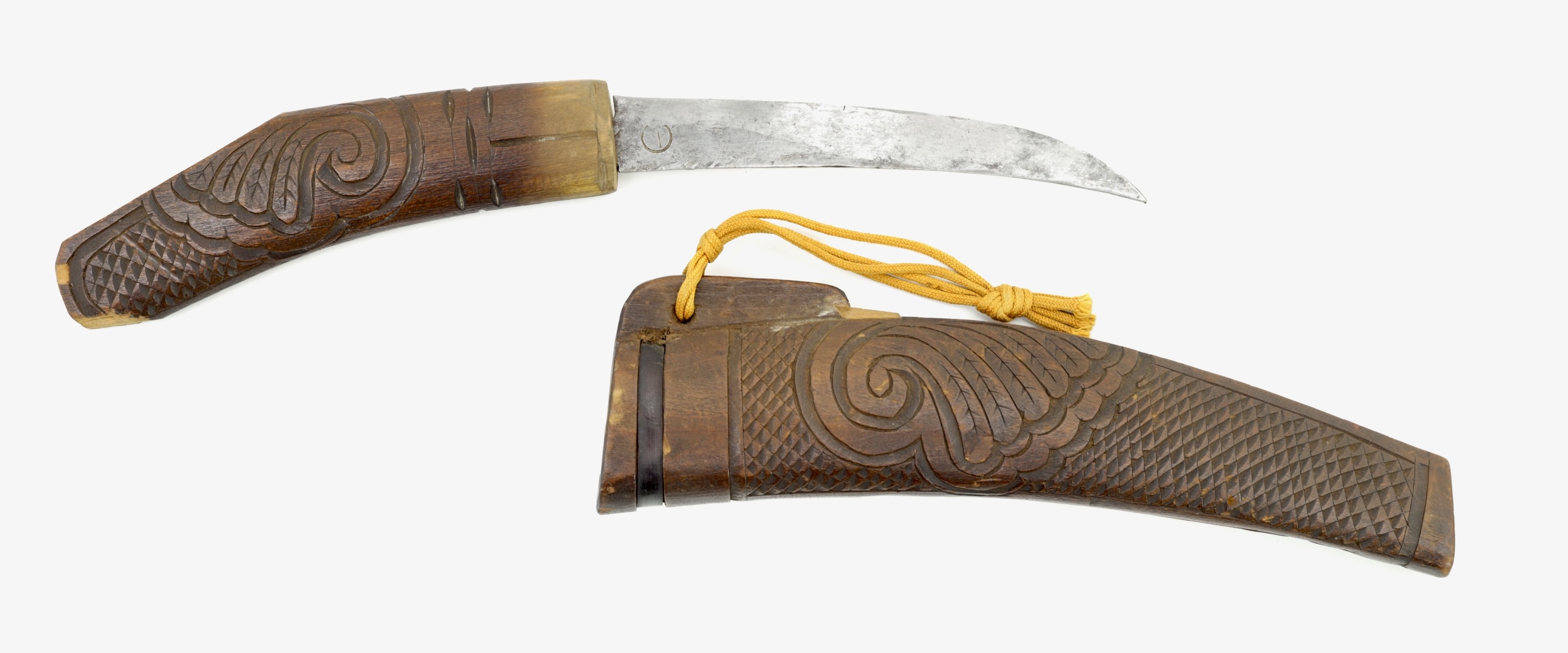
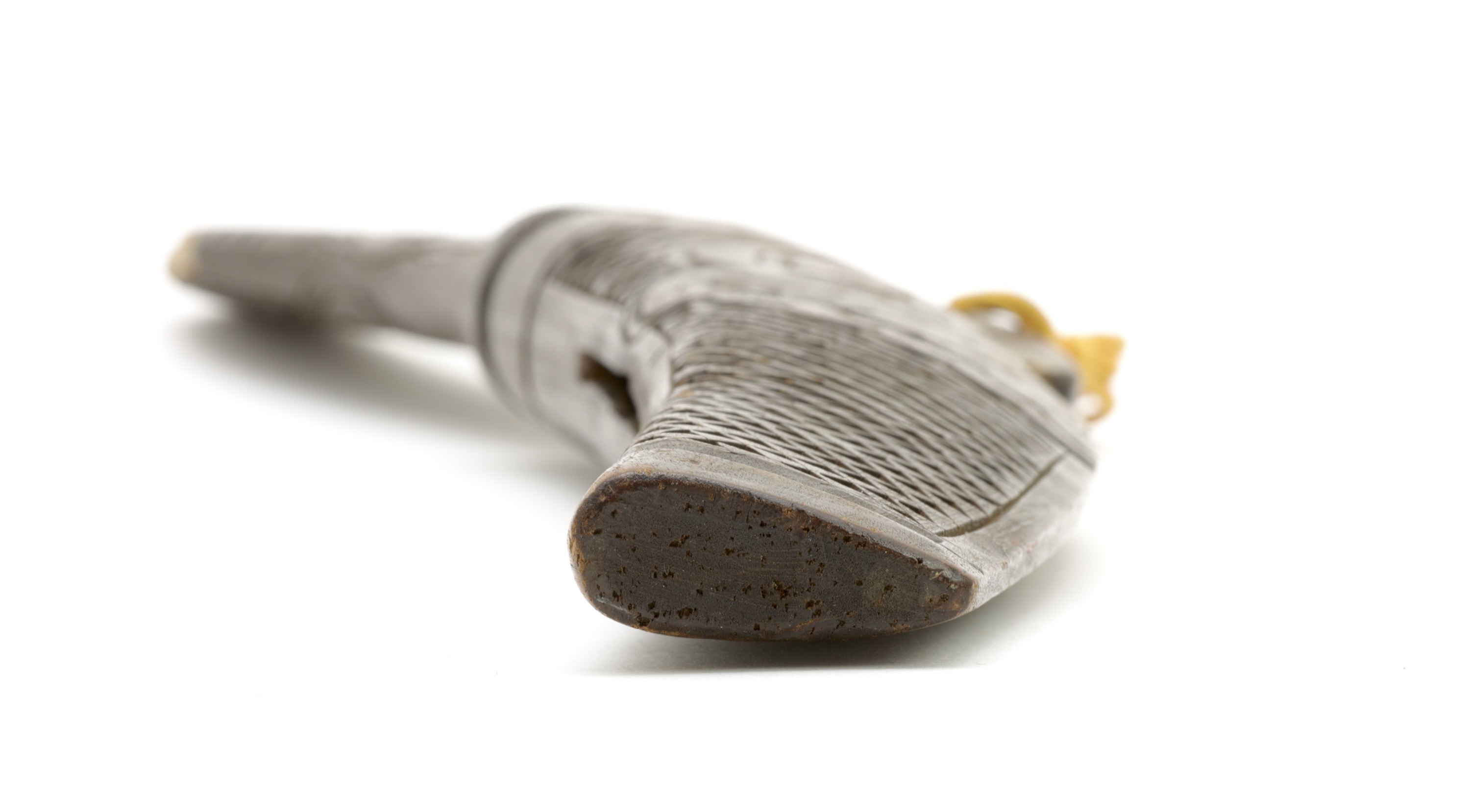


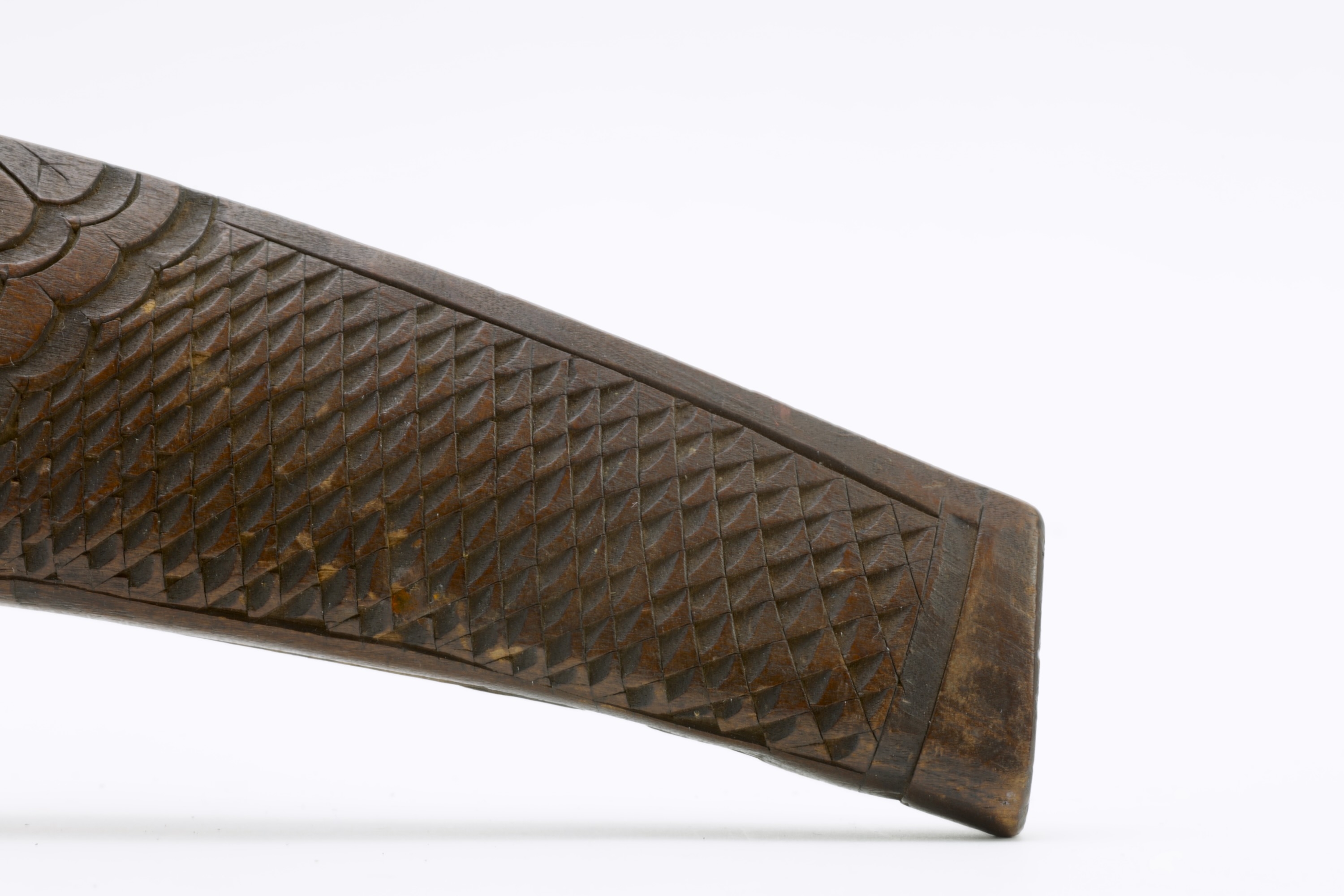

A rare type of dagger from South Kalimantan, loosely based on Islamic daggers seen worn by traders.
This peculiar sword was used by the Garo people of Assam for fighting, clearing the jungle, and animal…

